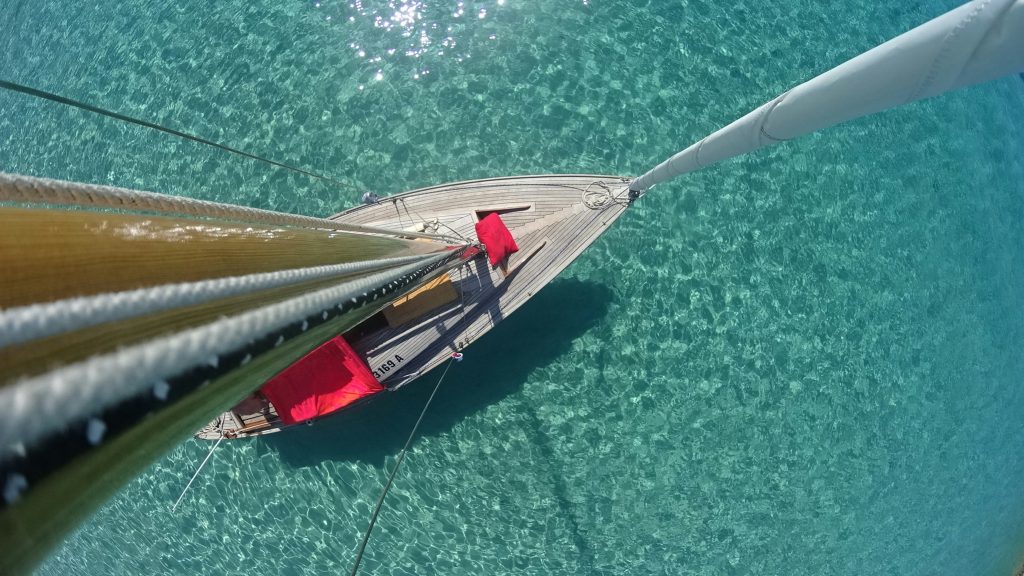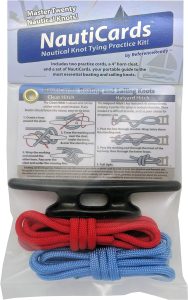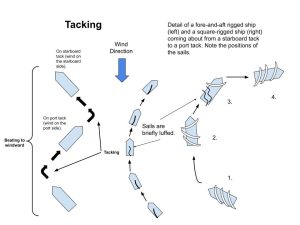Have you ever wondered how sailors navigate their vessels effectively and efficiently using the wind? The topic of Points of Sail and Sail Trim offers an intriguing glimpse into the nuanced methods sailors employ to optimize their sailing experience. Whether you are a seasoned sailor or a novice embarking on your first voyage, understanding the essential aspects of sail trim and points of sail is fundamental for mastering the art of sailing.
Points of Sail
Points of sail refer to the different angles at which a sailing vessel can orient relative to the wind. Each point of sail impacts speed, maneuverability, and overall sailing efficiency. These points can be categorized into several zones, helping sailors to adjust their sails accordingly.
No-Sail Zone
The no-sail zone, typically about 45 degrees on either side of the wind direction, is where the wind is coming from directly in front of the boat. In this zone, the sails cannot generate forward thrust, rendering it impossible to sail directly into the wind.
Adjusting for the No-Sail Zone
- Tacking: To navigate beyond this zone, tacking, which involves a series of zigzag movements, is often employed.
- Wind Indicators: Sailors often use wind indicators like telltales or wind vanes to determine the wind direction, ensuring they can quickly adjust their heading.
Close-Hauled
Just outside the no-sail zone lies the close-hauled position, where the boat is sailing as close to the wind as possible. This position maximizes upwind travel efficiency.
Techniques for Close-Hauled Sailing
- Sail Trim: Tightening the sails (sheeting in) as much as possible to reduce drag.
- Centerboard Adjustment: Lowering the centerboard to mitigate side drift.
Close Reach
As the angle widens from the close-hauled position, a vessel enters the close reach zone. Here, effectiveness in harnessing wind power improves, and boats can achieve higher speeds.
Optimizing Close Reach
- Mainsail Adjustment: Easing out the main sail slightly to prevent luffing.
- Boat Balance: Maintaining proper boat balance by shifting crew weight.
Beam Reach
A beam reach occurs when the wind is perpendicular to the boat, offering an ideal balance between speed and ease of handling. This point of sail is often considered the fastest.
Ideal Adjustments for Beam Reach
- Sail Shape: Adjusting the sails to create an optimal aerodynamic shape.
- Traveler Position: Sliding the traveler to balance the sail area.
Broad Reach
In a broad reach, the wind comes from aft of the beam but not directly behind. This angle allows for significant speed while maintaining good control.
Key Techniques for Broad Reach
- Gybing: Managing controlled gybes to change direction smoothly.
- Boom Vang: Using a boom vang to control sail twist and maintain efficient sail shape.
Running
When the wind is directly behind the boat, it is referred to as running. This point of sail poses unique challenges, such as accidental jibes.
Strategies for Running
- Preventer Lines: Rigging preventer lines to stabilize the boom.
- Wing-on-Wing: Setting the jib and mainsail on opposite sides to maximize wind capture.

Sail Trim
Sail trim involves adjusting sails to maximize efficiency and performance based on wind conditions and points of sail. Proper sail trim can significantly impact speed, balance, and overall sailing experience.
Basics of Sail Trim
Understanding the basics involves grasping how to manipulate the mainsail and jib to optimize wind capture. Trim adjustments are ongoing and require constant attention to wind shifts and boat speed.
Mainsail Trim
- Sheet Tension: Adjust the mainsheet to fine-tune the mainsail’s angle relative to the wind.
- Outhaul: Control the foot tension of the mainsail to vary fullness.
Jib Trim
- Jib Sheets: Adjust these for optimal wind angle.
- Leech Line: Prevent fluttering through fine tweaks.
Adjusting for Wind Conditions
Wind strength and direction fluctuations necessitate thorough sail trim adjustments. Effective sail trim balances the power and drive in the sails, reducing unnecessary stress on the rigging and improving performance.
Light Air Sailing
- Fuller Sails: Allowing more curvature in the sails to catch more wind.
- Weight Positioning: Distributing crew weight to maintain momentum.
Strong Winds
- Flattening Sails: Tightening sails to reduce wind force.
- Reefing: Reducing the sail area to maintain control.
Advanced Adjustments
As sailors gain experience, more advanced adjustments come into play. These include optimizing sail shape through sophisticated manipulations, such as using the Cunningham, outhaul, and boom vang.
Cunningham
- Downhaul Control: Tightening the luff to improve sail shape.
- Upwind Efficiency: Enhancing the sail’s efficacy when sailing upwind.
Boom Vang
- Sail Twist: Controlling the leech tension to reduce twist and improve shape.
- Downwind Stability: Maintaining sail shape during downwind sailing.
Symmetrical and Asymmetrical Spinnakers
Spinnakers are sails used primarily for downwind sailing, and their trim requires specialized understanding.
Symmetrical Spinnakers
- Pole Positioning: Adjusting the spinnaker pole to maintain sail shape.
- Sheet Balance: Balancing the guy and sheet for optimal control.
Asymmetrical Spinnakers
- Tack Line: Adjusting the tack to control the sail’s angle.
- Gybing Techniques: Utilizing specific techniques for gybing with asymmetrical spinnakers.
Sails Interaction
Understanding the interaction between different sails is vital. For instance, the mainsail and jib must complement rather than conflict with each other to ensure balanced and efficient sailing.
Slot Effect
- Jib and Mainsail Coordination: The gap between the jib and mainsail should be optimized for airflow.
- Speed and Stability: Enhancing the slot effect for better speed and stability.

Practical Applications
Exploring practical applications of sail trim and points of sail is essential for gaining real-world sailing proficiency. This involves not only adjusting for theoretical knowledge but also refining skills through hands-on experience.
Navigating Different Courses
Sailors must understand how to adjust for different courses using the fundamental principles of points of sail and sail trim.
Upwind Courses
- Close-Hauled Techniques: Mastering upwind sailing requires precision in trim and balancing boat dynamics.
- Tacking Skills: Efficient tacking to progress against the wind.
Downwind Courses
- Running and Broad Reach Expertise: Achieving high speeds while maintaining control.
- Wing-on-Wing Proficiency: Optimizing sail positioning for enhanced downwind sailing.
Racing Considerations
In a racing scenario, minor adjustments can have significant impacts. Mastering the nuances of sail trim and understanding optimal points of sail are crucial for competitive advantage.
Pre-Race Preparation
- Rig Tuning: Ensuring all elements are in optimal condition.
- Wind Analysis: Pre-race wind assessment for strategic planning.
Mid-Race Adjustments
- Constant Vigilance: Continuous monitoring and adapting to changing conditions.
- Mark Rounding Techniques: Efficiently navigating mark roundings to maintain speed and position.
Cruising Techniques
For those more interested in leisure sailing, understanding sail trim and points of sail enhances the overall cruising experience, making it safer and more enjoyable.
Comfort and Safety
- Reefing Strategies: Maintaining control and comfort in various wind conditions.
- Balancing the Boat: Adjusting sails to create a stable and comfortable ride.
Long-Distance Sailing
- Energy Efficiency: Optimizing sail trim for long passages to conserve energy and maintain efficient sailing.
- Weather Adaptation: Adjusting to changes in weather over extended periods.

Conclusion
Mastery of points of sail and sail trim is essential for anyone serious about improving their sailing skills. From understanding the theoretical aspects to applying them in real-world scenarios, the knowledge gained can significantly enhance your ability to navigate efficiently and safely.
Understanding these core principles equips you with the skills to adapt to the ever-changing conditions on the water. In navigating the complexities of sail trim and points of sail, you gain not only proficiency but also a deeper appreciation for the art and science of sailing.






